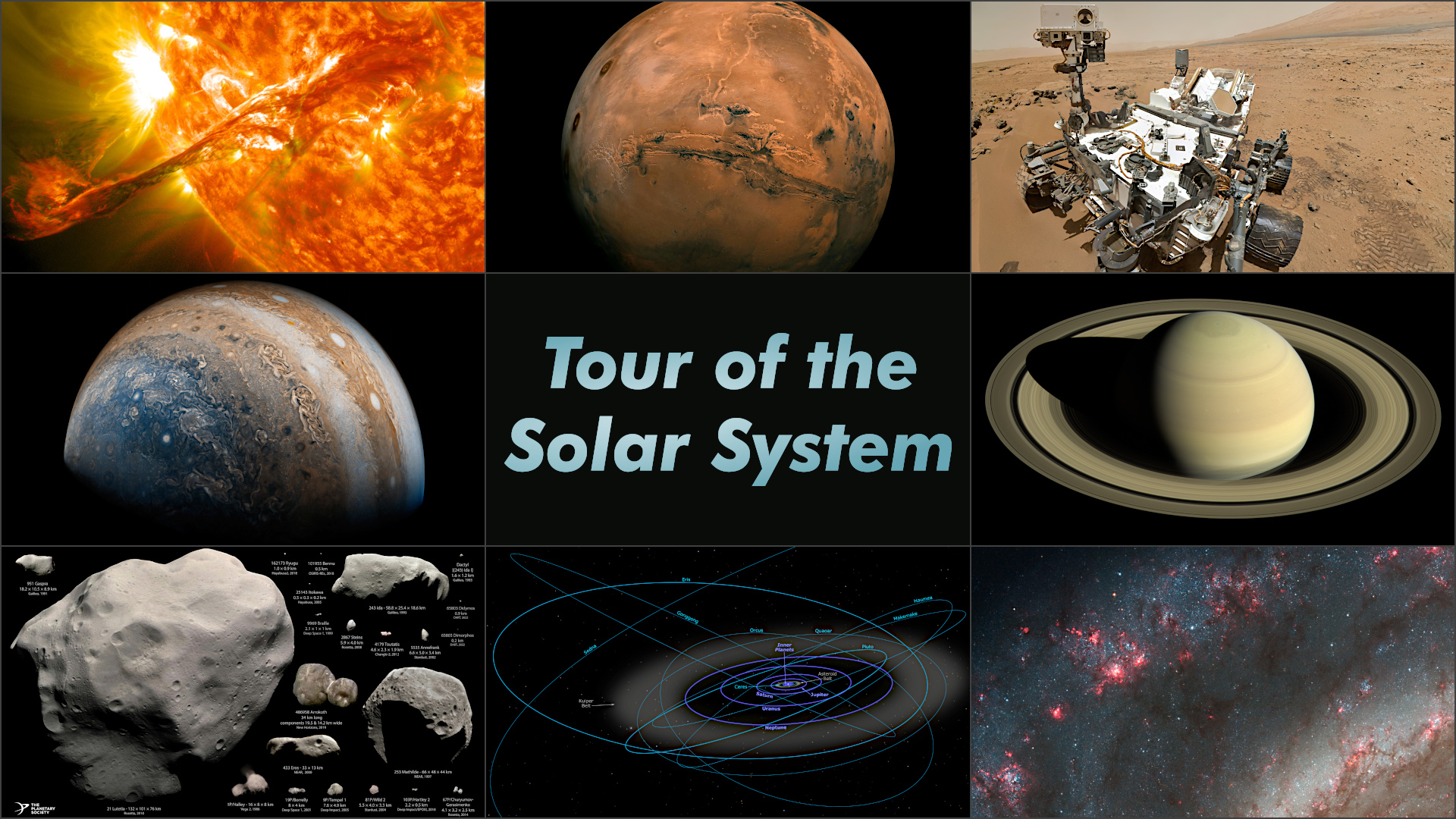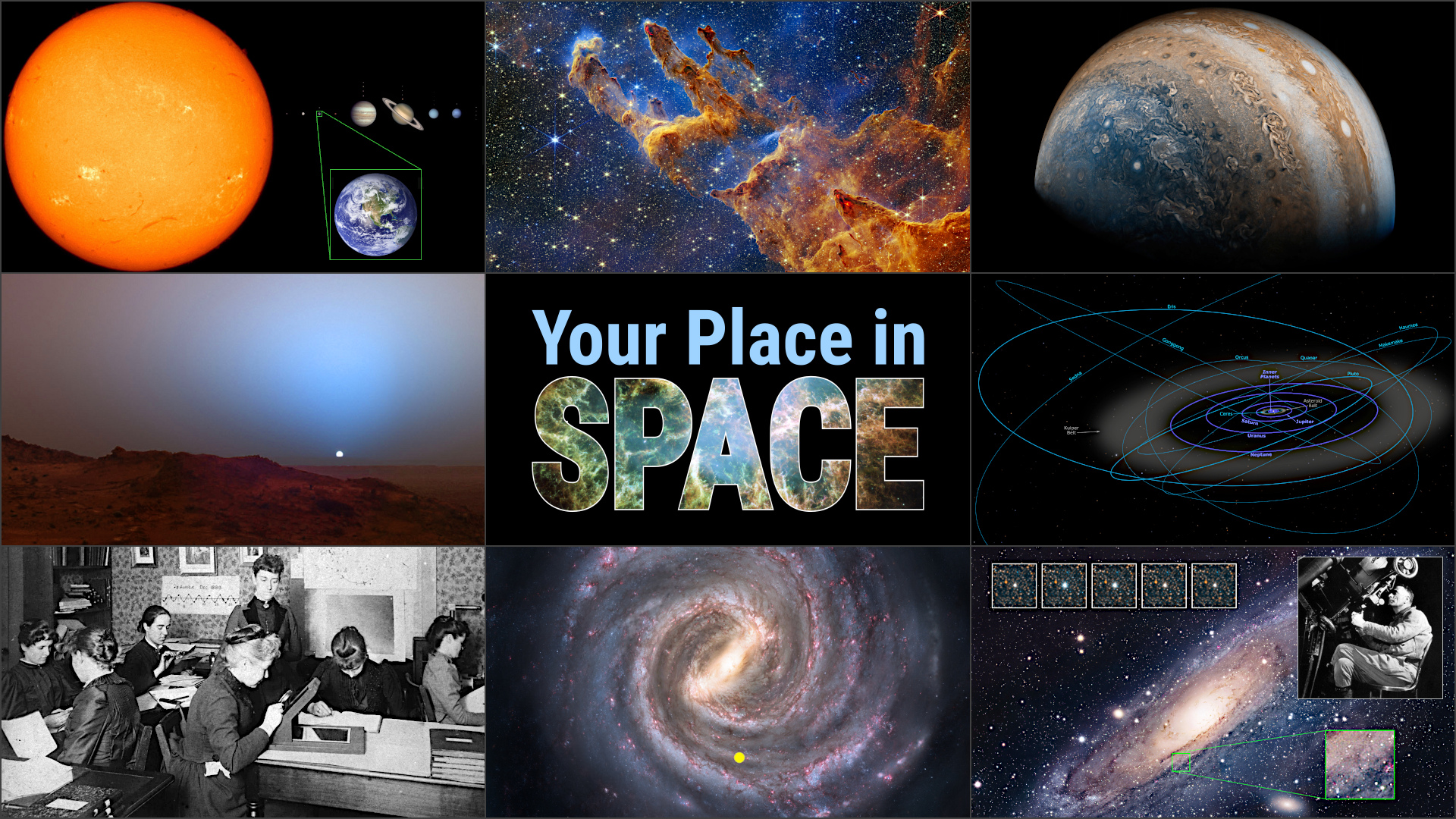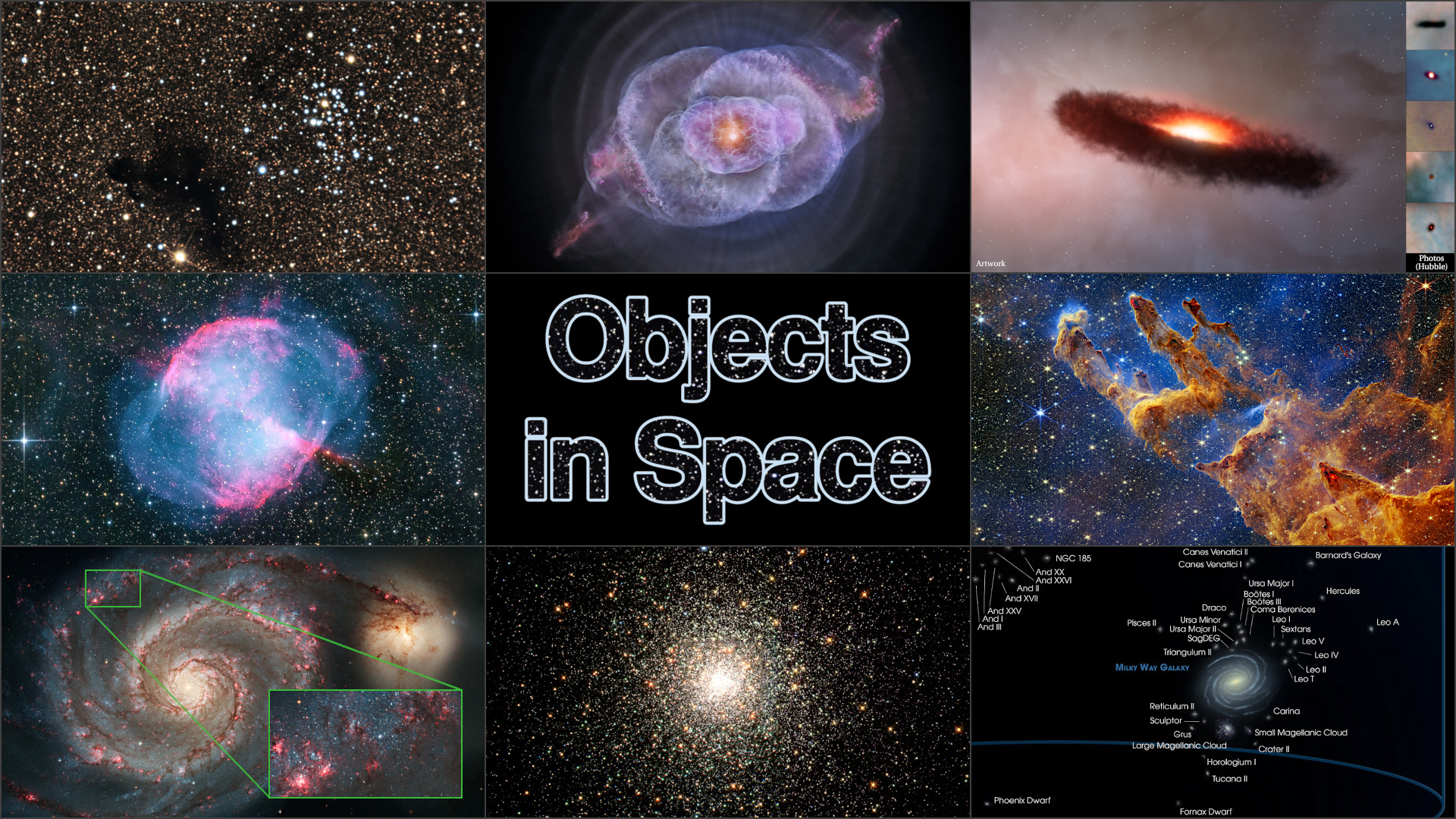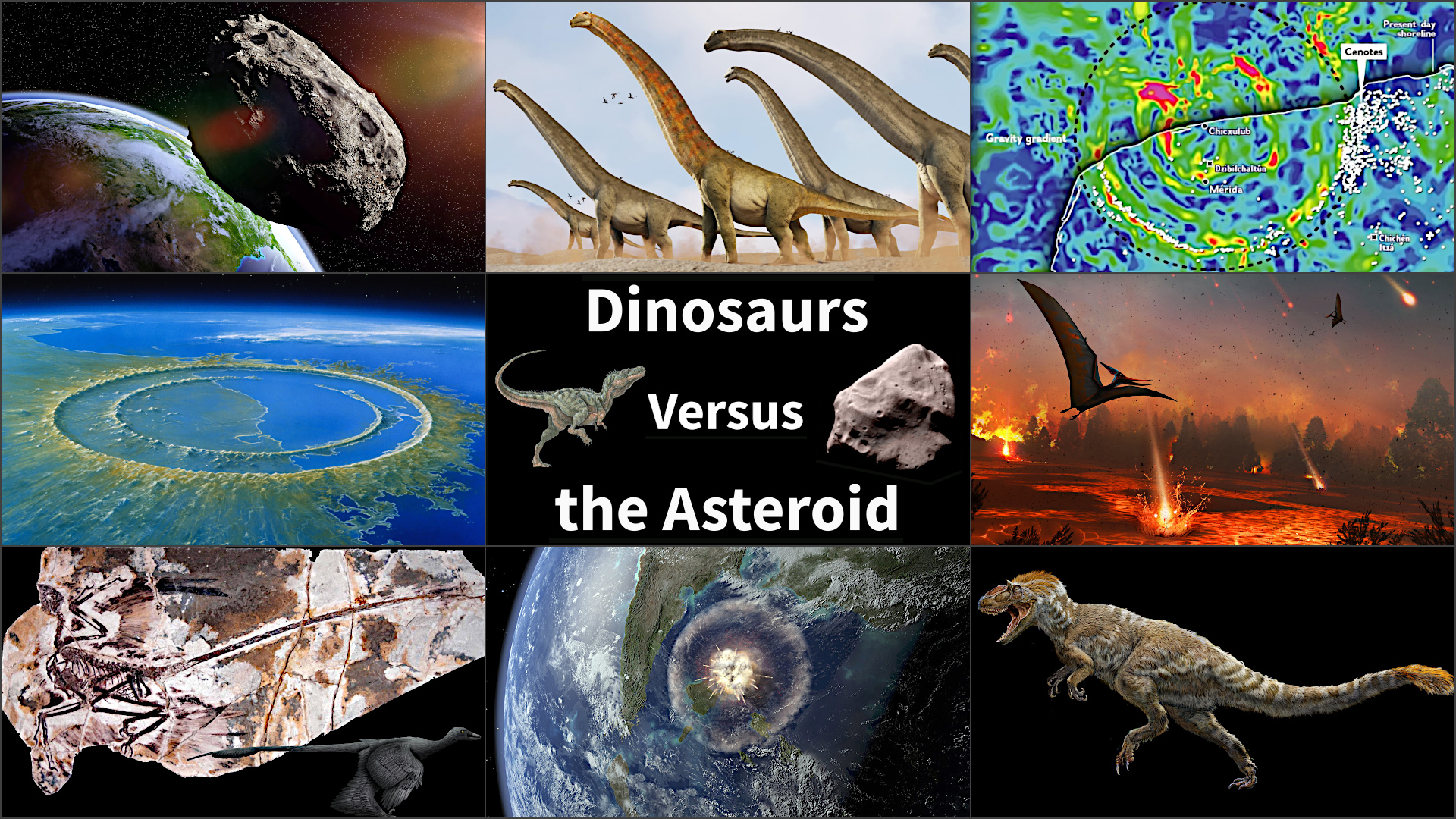These are the presentations I have available with no lead time. They are kept up to date with current research and the latest photos. All of them are paced to last 45 to 50 minutes, so they fit into an hour block with a little time at the end for questions. You can send me an email at dan@spacemandan.net to set up a presentation for your group.
All of these are appropriate for general audiences, but the scope is a little too broad for the youngest children. For that reason, I suggest third grade and up.
If you don't have something specific in mind, or don't know which presentation to choose, my recommendation is “Your Place in Space.” It includes many of the best photos from the other presentations, but it touches on a wider variety of topics.

We start on the surface of the sun and step through the Solar System in order from there. The journey includes the asteroid belt and some dwarf planets. At the end, a few pictures show galaxies which contain trillions of other star systems.
The photos in this presentation are from the latest space probes and telescopes. It is updated when new or better photos are obtained.

We start with the placement of Earth in the Solar System, then move out to the local stars. Then we look at the Milky Way galaxy and explore some nebulae and dust clouds. The outward journey ends with the location of our home in the context of all the other galaxies in the universe.
The last section is to explain how we learned this information. It tells the story of one of the main discoveries that advanced our understanding of the universe and the scientists involved. It pays special attention to a woman who was at the heart of it since female astronomers are so poorly remembered.

There are many types of objects in space like galaxies, nebulae, and star clusters. Each of these categories has subdivisions as well, making it more complicated. We will go over all the different types. We will also talk about how they interact, and in many cases, how they form. There are photos of everything from the best telescopes we have.

First, we will go over the evidence that convinced scientists that a meteorite impact was the end of the non-avian dinosaurs. (There were also volcanoes erupting, and we won't ignore them.) Next, we will talk about the dinosaurs that existed at the end of the Cretaceous Period when the extinction event occurred. Lastly, we will see the disastrous effects that the impact had on the world and the ecosystem. There were tsunamis, earthquakes, lava bombs, an impact winter, and more.

Every day, tons of meteorites fall to Earth, but they are not easy to find! We will look at the four main types of meteorites, what they look like, and where they come from. We will look at some famous meteorites that have been found, and how you can identify one. Finally, we will look at the newer field of micrometeorite study.
I will bring a few actual meteorites.